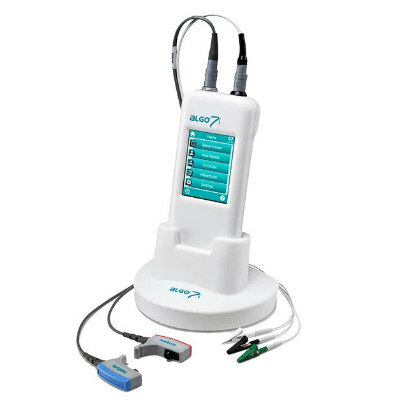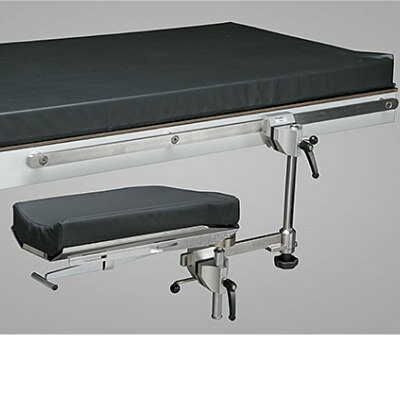Mortality Rates Lower at Major Teaching Hospitals
|
By HospiMedica International staff writers Posted on 05 Jun 2017 |

Image: The Harvard School of Public Health (Photo courtesy of Wikimedia).
Admission to an academic medical center (AMC) is associated with a lower overall 30-day risk of death compared with admission to a non-teaching hospital, according to a new study.
Researchers at Harvard School of Public Health (HSPH; Boston, MA, USA), Massachusetts General Hospital (MGH; Boston, USA), and other institutions conducted a study using U.S. national Medicare data to compare mortality rates in teaching and non-teaching hospitals for common medical and surgical conditions among beneficiaries 65 years and older. The sample consisted of 21,451,824 total hospitalizations at 4,483 hospitals, of which 250 (5.6%) were major teaching, 894 (19.9%) were minor teaching, and 3,339 (74.3%) were non-teaching hospitals.
The main outcomes and measures were 30-day mortality rate for all hospitalizations and for 15 common medical and 6 surgical conditions. Secondary outcomes included 30-day mortality stratified by hospital size, and 7-day mortality and 90-day mortality for all hospitalizations, as well as for individual medical and surgical conditions. The results revealed that unadjusted 30-day mortality was 8.1% at major teaching hospitals, 9.2% at minor teaching hospitals, and 9.6% at non-teaching hospitals, representing a 1.5% mortality difference between major teaching hospitals and non-teaching hospitals.
After adjusting for patient and hospital characteristics, the same pattern persisted, but the difference in mortality between major and non-teaching hospitals was smaller. Further stratification by hospital size showed that 187 large (over 400 beds) AMCs had lower adjusted overall 30-day mortality (8.1%) relative to 76 large non-teaching hospitals (9.4%). The same pattern was observed in medium-sized hospitals. Among smaller hospitals, with less than 100 beds hospitals, minor teaching hospitals had lower overall 30-day mortality relative to non-teaching hospitals. The study was published on May 23, 2017, in JAMA.
“Academic medical centers provide a unique environment, with 24-hour availability of specialty services, advanced technologies, and some of the most expert physicians in the country. This seems to pay off for patients,” said lead author Laura Burke, MD, of HSPS. “While obviously not all patients can receive care in major teaching hospitals, understanding which strategies and resources are particularly important to patient outcomes, and how they can be replicated among nonteaching hospitals, is critically important to improve care for all patients.”
“We found to our surprise that across a wide range of medical and surgical conditions, patients at teaching hospitals did better; they were less likely to die,” added senior author Ashish Jha, MD, MPH, of HSPS. “While mortality may not be the only indicator that matters, it certainly is the most important one. We know that short term mortality is driven largely by how well the hospital does in taking care of patients.”
AMCs are often considered more expensive than community hospitals and some insurers have excluded them from their networks in an attempt to control costs, assuming that quality is comparable.
Related Links
Harvard School of Public Health
Massachusetts General Hospital
Researchers at Harvard School of Public Health (HSPH; Boston, MA, USA), Massachusetts General Hospital (MGH; Boston, USA), and other institutions conducted a study using U.S. national Medicare data to compare mortality rates in teaching and non-teaching hospitals for common medical and surgical conditions among beneficiaries 65 years and older. The sample consisted of 21,451,824 total hospitalizations at 4,483 hospitals, of which 250 (5.6%) were major teaching, 894 (19.9%) were minor teaching, and 3,339 (74.3%) were non-teaching hospitals.
The main outcomes and measures were 30-day mortality rate for all hospitalizations and for 15 common medical and 6 surgical conditions. Secondary outcomes included 30-day mortality stratified by hospital size, and 7-day mortality and 90-day mortality for all hospitalizations, as well as for individual medical and surgical conditions. The results revealed that unadjusted 30-day mortality was 8.1% at major teaching hospitals, 9.2% at minor teaching hospitals, and 9.6% at non-teaching hospitals, representing a 1.5% mortality difference between major teaching hospitals and non-teaching hospitals.
After adjusting for patient and hospital characteristics, the same pattern persisted, but the difference in mortality between major and non-teaching hospitals was smaller. Further stratification by hospital size showed that 187 large (over 400 beds) AMCs had lower adjusted overall 30-day mortality (8.1%) relative to 76 large non-teaching hospitals (9.4%). The same pattern was observed in medium-sized hospitals. Among smaller hospitals, with less than 100 beds hospitals, minor teaching hospitals had lower overall 30-day mortality relative to non-teaching hospitals. The study was published on May 23, 2017, in JAMA.
“Academic medical centers provide a unique environment, with 24-hour availability of specialty services, advanced technologies, and some of the most expert physicians in the country. This seems to pay off for patients,” said lead author Laura Burke, MD, of HSPS. “While obviously not all patients can receive care in major teaching hospitals, understanding which strategies and resources are particularly important to patient outcomes, and how they can be replicated among nonteaching hospitals, is critically important to improve care for all patients.”
“We found to our surprise that across a wide range of medical and surgical conditions, patients at teaching hospitals did better; they were less likely to die,” added senior author Ashish Jha, MD, MPH, of HSPS. “While mortality may not be the only indicator that matters, it certainly is the most important one. We know that short term mortality is driven largely by how well the hospital does in taking care of patients.”
AMCs are often considered more expensive than community hospitals and some insurers have excluded them from their networks in an attempt to control costs, assuming that quality is comparable.
Related Links
Harvard School of Public Health
Massachusetts General Hospital
Latest Hospital News News
- Nurse Tracking System Improves Hospital Workflow
- New Children’s Hospital Transforms California Healthcare
- Noisy Hospitals Face Threat of Decreased Federal Compensation
- Orthopedics Centre of Excellence Planned for Guy’s Hospital
- Research Suggests Avoidance of Low-Value Surgical Procedures
- U.S. Federal Readmission Fines Linked to Higher Mortality
- Columbia China to Build New Hospital in Jiaxing
- Dubai Debuts Second Robotic Pharmacy Service
- Seattle Hospital Network Shifts Away from Overlapping Surgeries
- ACC to Launch Valvular Heart Disease Program in China
- South Australia to Inaugurate Upscale Hospital
- Raffles to Launch Second Hospital Project in China
- Research Center Tackles Antimicrobial Drugs Challenge
- Miami Cardiac & Vascular Institute Completes Expansion Project
- Hospital Antibiotic Policies Improve Prescription Practices
- USC Virtual Care Clinic to Employ Avatar Doctors
Channels
Artificial Intelligence
view channel
AI-Powered Algorithm to Revolutionize Detection of Atrial Fibrillation
Atrial fibrillation (AFib), a condition characterized by an irregular and often rapid heart rate, is linked to increased risks of stroke and heart failure. This is because the irregular heartbeat in AFib... Read more
AI Diagnostic Tool Accurately Detects Valvular Disorders Often Missed by Doctors
Doctors generally use stethoscopes to listen for the characteristic lub-dub sounds made by heart valves opening and closing. They also listen for less prominent sounds that indicate problems with these valves.... Read moreCritical Care
view channel
Deep-Learning Model Predicts Arrhythmia 30 Minutes before Onset
Atrial fibrillation, the most common type of cardiac arrhythmia worldwide, affected approximately 59 million people in 2019. Characterized by an irregular and often rapid heart rate, atrial fibrillation... Read more
Breakthrough Technology Combines Detection and Treatment of Nerve-Related Disorders in Single Procedure
The peripheral nervous system (PNS) serves as the communication network that links the brain and spinal cord to every other part of the body. It consists of two parts: the somatic nervous system, which... Read moreSurgical Techniques
view channel
Hydrogel-Based Miniaturized Electric Generators to Power Biomedical Devices
The development of engineered devices that can harvest and convert the mechanical motion of the human body into electricity is essential for powering bioelectronic devices. This mechanoelectrical energy... Read moreWearable Technology Monitors and Analyzes Surgeons' Posture during Long Surgical Procedures
The physical strain associated with the static postures maintained by neurosurgeons during long operations can lead to fatigue and musculoskeletal problems. An objective assessment of surgical ergonomics... Read more.jpg)
Custom 3D-Printed Orthopedic Implants Transform Joint Replacement Surgery
The evolving field of 3D printing is revolutionizing orthopedics, especially for individuals requiring joint replacement surgeries where traditional implants fail to provide a solution. Although most people... Read more
Cutting-Edge Imaging Platform Detects Residual Breast Cancer Missed During Lumpectomy Surgery
Breast cancer is becoming increasingly common, with statistics indicating that 1 in 8 women will develop the disease in their lifetime. Lumpectomy remains the predominant surgical intervention for treating... Read morePatient Care
view channel
Surgical Capacity Optimization Solution Helps Hospitals Boost OR Utilization
An innovative solution has the capability to transform surgical capacity utilization by targeting the root cause of surgical block time inefficiencies. Fujitsu Limited’s (Tokyo, Japan) Surgical Capacity... Read more
Game-Changing Innovation in Surgical Instrument Sterilization Significantly Improves OR Throughput
A groundbreaking innovation enables hospitals to significantly improve instrument processing time and throughput in operating rooms (ORs) and sterile processing departments. Turbett Surgical, Inc.... Read more
Next Gen ICU Bed to Help Address Complex Critical Care Needs
As the critical care environment becomes increasingly demanding and complex due to evolving hospital needs, there is a pressing requirement for innovations that can facilitate patient recovery.... Read moreGroundbreaking AI-Powered UV-C Disinfection Technology Redefines Infection Control Landscape
Healthcare-associated infection (HCAI) is a widespread complication in healthcare management, posing a significant health risk due to its potential to increase patient morbidity and mortality, prolong... Read moreHealth IT
view channel
Machine Learning Model Improves Mortality Risk Prediction for Cardiac Surgery Patients
Machine learning algorithms have been deployed to create predictive models in various medical fields, with some demonstrating improved outcomes compared to their standard-of-care counterparts.... Read more
Strategic Collaboration to Develop and Integrate Generative AI into Healthcare
Top industry experts have underscored the immediate requirement for healthcare systems and hospitals to respond to severe cost and margin pressures. Close to half of U.S. hospitals ended 2022 in the red... Read more
AI-Enabled Operating Rooms Solution Helps Hospitals Maximize Utilization and Unlock Capacity
For healthcare organizations, optimizing operating room (OR) utilization during prime time hours is a complex challenge. Surgeons and clinics face difficulties in finding available slots for booking cases,... Read more
AI Predicts Pancreatic Cancer Three Years before Diagnosis from Patients’ Medical Records
Screening for common cancers like breast, cervix, and prostate cancer relies on relatively simple and highly effective techniques, such as mammograms, Pap smears, and blood tests. These methods have revolutionized... Read morePoint of Care
view channel
Critical Bleeding Management System to Help Hospitals Further Standardize Viscoelastic Testing
Surgical procedures are often accompanied by significant blood loss and the subsequent high likelihood of the need for allogeneic blood transfusions. These transfusions, while critical, are linked to various... Read more
Point of Care HIV Test Enables Early Infection Diagnosis for Infants
Early diagnosis and initiation of treatment are crucial for the survival of infants infected with HIV (human immunodeficiency virus). Without treatment, approximately 50% of infants who acquire HIV during... Read more
Whole Blood Rapid Test Aids Assessment of Concussion at Patient's Bedside
In the United States annually, approximately five million individuals seek emergency department care for traumatic brain injuries (TBIs), yet over half of those suspecting a concussion may never get it checked.... Read more
New Generation Glucose Hospital Meter System Ensures Accurate, Interference-Free and Safe Use
A new generation glucose hospital meter system now comes with several features that make hospital glucose testing easier and more secure while continuing to offer accuracy, freedom from interference, and... Read moreBusiness
view channel
Johnson & Johnson Acquires Cardiovascular Medical Device Company Shockwave Medical
Johnson & Johnson (New Brunswick, N.J., USA) and Shockwave Medical (Santa Clara, CA, USA) have entered into a definitive agreement under which Johnson & Johnson will acquire all of Shockwave’s... Read more
















